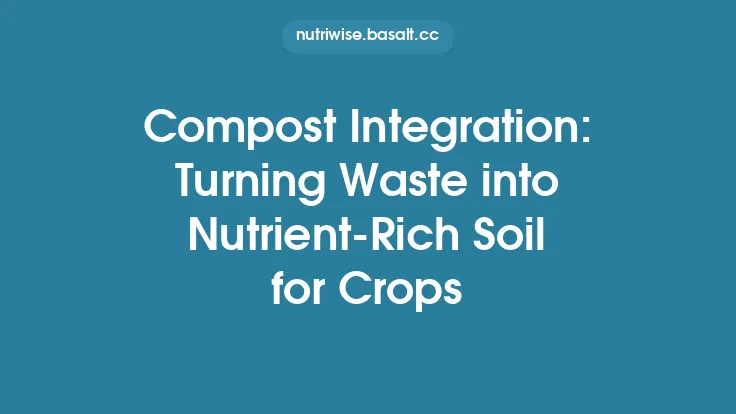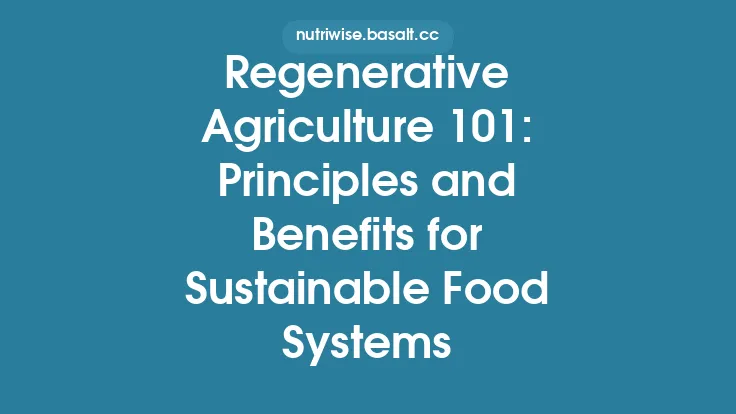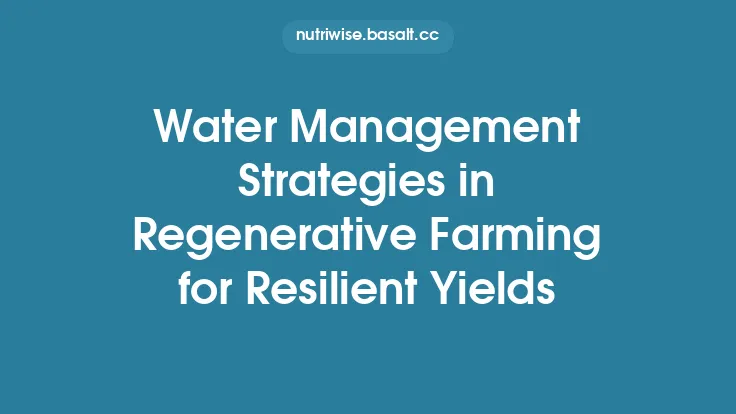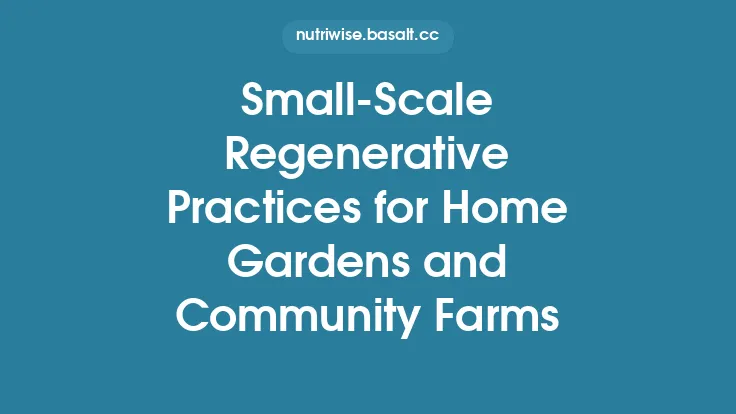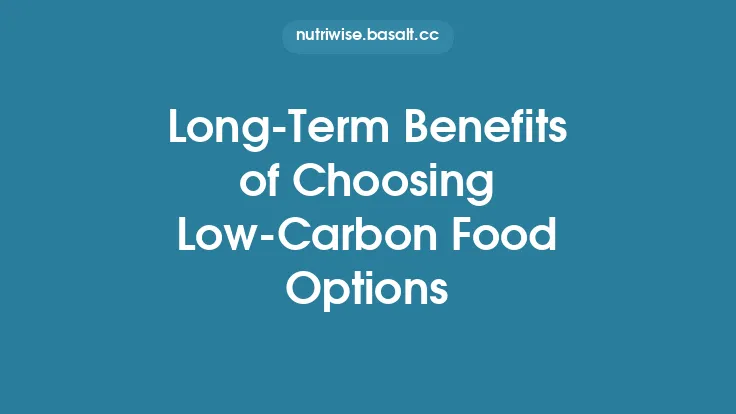Soil carbon is the cornerstone of a resilient, productive, and climate‑smart agricultural system. While the concept of “building soil carbon” may sound simple—add organic matter and let nature do the rest—the pathways through which carbon is captured, stabilized, and retained in the soil are complex and highly dependent on management choices, climate, and soil type. Long‑term carbon sequestration is not a one‑off event; it requires a suite of practices that work together to continuously feed the soil carbon pool, protect it from rapid loss, and ultimately turn farmland into a net sink for atmospheric CO₂. This article delves into the science behind soil carbon, outlines the most effective techniques for lasting sequestration, and provides practical guidance for growers who want to embed carbon‑building into their everyday operations.
Understanding Soil Carbon Dynamics
1. Forms of Soil Carbon
- Particulate Organic Matter (POM): Fresh plant residues and microbial biomass that are relatively labile. They turn over on the order of months to a few years.
- Mineral‑Associated Organic Carbon (MAOC): Organic molecules bound to clay minerals and metal oxides. This fraction is much more stable, persisting for decades to centuries.
- Black Carbon (Biochar): Highly aromatic, condensed carbon structures that resist decomposition for centuries.
2. Pathways of Carbon Input
- Above‑ground residues: Stems, leaves, and husks that fall onto the soil surface.
- Below‑ground inputs: Root exudates, fine root turnover, and rhizodeposition.
- External amendments: Biochar, humic substances, and mineral additives.
3. Mechanisms of Stabilization
- Physical protection: Occlusion of organic matter within soil aggregates.
- Chemical sorption: Binding to mineral surfaces (especially Fe/Al oxides and clays).
- Biochemical recalcitrance: Intrinsic resistance of certain organic compounds (e.g., lignin, biochar) to microbial attack.
Understanding these mechanisms helps growers select practices that not only increase carbon inputs but also promote the transition of carbon from the labile POM pool to the more stable MAOC pool.
Why Long‑Term Sequestration Matters
- Climate mitigation: Each tonne of carbon retained in soil offsets roughly 3.7 t of CO₂ emissions.
- Soil health benefits: Higher carbon improves water‑holding capacity, nutrient retention, and aggregate stability, reducing erosion and increasing resilience to extreme weather.
- Economic incentives: Many carbon markets and government programs now reward verified soil carbon gains, creating a new revenue stream for producers.
The longevity of the carbon stored is crucial. Short‑term spikes in carbon that quickly mineralize back to CO₂ provide little climate benefit. Practices that foster stable carbon forms are therefore the focus of long‑term sequestration strategies.
Key Management Practices for Building Soil Carbon
Reduced and No‑Tillage Systems
- Mechanism: Minimizing soil disturbance preserves existing aggregates and protects MAOC from oxidation.
- Implementation tips:
- Use a narrow‑track, high‑efficiency planter to limit the width of the disturbed zone.
- Combine with precision seed placement to maintain uniform emergence without extensive soil disruption.
- Considerations: In heavy, compacted soils, occasional strategic deep ripping may be needed to restore porosity without undoing the carbon gains.
Residue Retention and Mulching
- Surface mulches: Straw, shredded woody material, or purpose‑grown mulch crops left on the field act as a continuous source of POM.
- In‑field residue management:
- Avoid burning or removing harvest residues.
- Adjust combine settings to leave a uniform “stubble blanket” that slows decomposition and encourages root growth into the residue layer.
- Benefits: Mulches moderate soil temperature, reduce moisture loss, and create micro‑habitats for soil microbes that drive carbon stabilization.
Strategic Use of Biochar
- Why biochar? Its high aromatic carbon content makes it resistant to microbial breakdown, and its porous structure enhances soil water retention and microbial habitat.
- Application rates: 5–20 t ha⁻¹, depending on soil texture and baseline carbon levels.
- Integration:
- Incorporate biochar during planting operations to ensure even distribution.
- Pair with a modest amount of nitrogen fertilizer (often 10–20 % of the N rate) to stimulate microbial activity that can help bind biochar to mineral surfaces.
Mineral Amendments for Carbon Stabilization
- Silicate and aluminosilicate minerals (e.g., basalt rock dust, zeolites): Provide additional sorption sites for organic molecules, promoting MAOC formation.
- Application guidelines: 1–5 t ha⁻¹ of finely ground rock dust, applied annually or biennially.
- Synergy with organic inputs: When combined with high‑C residues, mineral amendments accelerate the transition of carbon into the mineral‑associated pool.
Enhancing Root Biomass and Depth
- Deep‑rooting cultivars: Select varieties with vigorous root systems (e.g., certain wheat, barley, and soybean lines) that deposit carbon deeper than the typical plow layer.
- Root zone management:
- Maintain optimal soil moisture and nutrient levels to avoid root stress, which can limit root growth.
- Use sub‑soil aeration tools sparingly to improve oxygen diffusion without disrupting existing carbon.
Microbial Inoculants and Soil Biology Boosters
- Mycorrhizal fungi: Arbuscular mycorrhizal (AM) inoculants increase carbon flow to the soil via hyphal networks and glomalin production, a sticky protein that binds organic matter to minerals.
- Beneficial bacteria: Phosphate‑solubilizing and nitrogen‑fixing strains can improve plant vigor, indirectly increasing root exudation and carbon inputs.
- Application strategy: Apply inoculants at planting or during early vegetative stages, ensuring good seed‑to‑soil contact and adequate moisture for colonization.
Precision Nutrient Management
- Balanced fertilization: Over‑application of nitrogen can accelerate microbial respiration, leading to higher CO₂ losses. Use soil tests and crop demand models to apply the right amount at the right time.
- Slow‑release fertilizers: Reduce peaks in microbial activity that can cause rapid carbon mineralization.
- Integrated nutrient budgeting: Combine organic amendments (e.g., manure, green manures—excluding cover crops) with synthetic inputs to maintain a steady supply of carbon and nutrients.
Integrated Carbon Accounting and Monitoring
- Baseline assessment: Conduct a soil carbon inventory using either direct sampling (dry combustion) or indirect methods (spectroscopy, remote sensing) before implementing new practices.
- Regular monitoring: Sample at 0–30 cm depth every 2–3 years to track changes in total organic carbon (TOC) and fractionate into POM, MAOC, and black carbon where possible.
- Use of models: Tools such as the Rothamsted Carbon Model (RothC) or the Soil Carbon Management Model (SCM) can predict long‑term sequestration potential and help refine management decisions.
Designing a Carbon‑Focused Farm Plan
- Map Soil Variability – Identify zones with low baseline carbon, high sand content, or compaction. Prioritize these for intensive carbon‑building interventions.
- Select Complementary Practices – Pair reduced tillage with residue retention in high‑erosion zones, and biochar plus mineral amendments in sandy soils where MAOC formation is limited.
- Set Measurable Targets – Aim for a realistic increase of 0.2–0.5 % TOC per year, which translates to roughly 1–2 t C ha⁻¹ over a five‑year horizon.
- Integrate Economic Analysis – Factor in potential carbon credit revenue, cost of amendments, and any yield impacts. A positive net present value (NPV) strengthens the business case for long‑term adoption.
- Iterate and Adapt – Use monitoring data to adjust amendment rates, tweak tillage depth, or modify inoculant applications. Continuous improvement is essential for maintaining carbon gains.
Overcoming Common Challenges
- Carbon Saturation: Soils have a finite capacity to store carbon, especially in the MAOC pool. Once saturation is approached, additional inputs may yield diminishing returns. Rotate practices (e.g., focus on biochar after mineral amendments) to target different carbon pools.
- Weather Variability: Drought can limit microbial activity, slowing carbon stabilization, while excessive moisture can promote anaerobic conditions and increase CO₂ or CH₄ emissions. Employ water‑conserving practices (e.g., mulches) to buffer extremes.
- Economic Barriers: High upfront costs of biochar or mineral amendments can deter adoption. Seek out cost‑share programs, carbon market pre‑sales, or cooperative purchasing agreements to lower financial risk.
- Verification and Credibility: To participate in carbon markets, growers must provide robust, third‑party verified data. Align monitoring protocols with recognized standards (e.g., Verra’s VCS, Gold Standard) from the outset.
Future Directions in Soil Carbon Sequestration
- Genomic‑Enabled Breeding: Advances in plant genomics are identifying traits linked to deeper rooting and higher exudate carbon, enabling the development of cultivars specifically designed for carbon capture.
- Digital Soil Carbon Platforms: Cloud‑based tools that integrate satellite imagery, IoT soil sensors, and AI analytics are making real‑time carbon budgeting more accessible to growers of all scales.
- Hybrid Carbon Farming Models: Combining carbon‑building practices with renewable energy installations (e.g., solar arrays that shade fields, reducing temperature stress) can create synergistic climate benefits.
Concluding Thoughts
Building soil carbon for long‑term sequestration is a multifaceted endeavor that blends scientific insight with practical farm management. By focusing on practices that increase carbon inputs, protect existing carbon, and promote the formation of stable carbon pools, growers can transform their fields into powerful climate mitigators while simultaneously enhancing soil health and productivity. The journey requires careful planning, ongoing measurement, and a willingness to adapt, but the rewards—both environmental and economic—are increasingly within reach for the modern, regenerative farmer.

